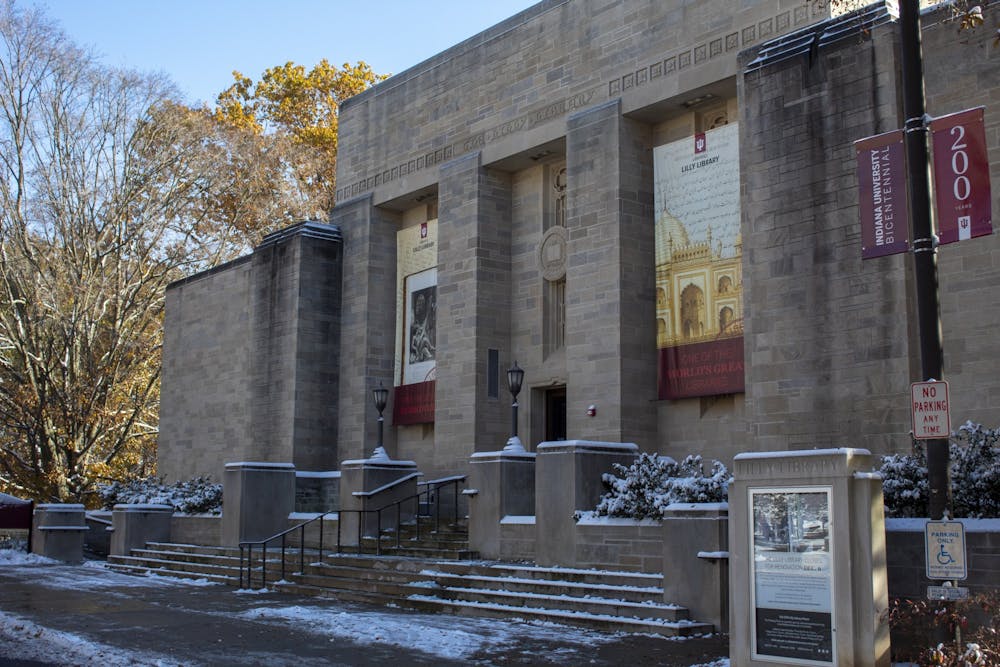The Lilly Library isn't like most other libraries that might come to mind. Students aren’t studying silently at tables spanning the entire room, there are no calculus or psychology textbooks open wide and coffee cups are not standing tall next to every sleep-deprived student.
Instead, historical artifacts covering disciplines of science to literature are encased in glass display tables that line the room of wood paneled walls. The smell of parchment pervades the air. Dark, ornate wood frames the doors and bookshelves and there is an extravagant chandelier hanging from the ceiling.
Sixty years after opening its doors, the library will close for renovations on Dec. 6 for about a year and a half. A $10.9 million grant to IU by the Lilly Endowment and a $12.4 million renovation approved by the IU Board of Trustees will collaborate for this “once-in-a-generation renovation,” as described on the library’s website.
“Although we have exhibitions, we are not primarily a museum; we are a research library open to anyone in the world who wants to use any of the millions of items in our collections,” Head of Public Services Rebecca Baumann said. “While the ‘museum’ aspect of the Lilly Library will be closed during renovation, students, faculty, and anyone who is curious about the past will still be able to use our collections for teaching and research.”
The relocation process has already begun for the collection’s irreplaceable items, which will be moved into secure storage. Beginning in March, there will be limited access and services available at the collection’s temporary home located in Herman B Wells Library on the 10th floor of the East Tower.
Between the years of 1954 and 1957, J.K. Lilly Jr. donated his private collection of books and manuscripts to IU. This sparked the building of a freestanding, private library initiated by President Herman B Wells. Located in the Fine Arts Plaza, the Lilly Library opened its doors in 1960 revealing 100,000 printed books and 1 million manuscripts.
Now, the library is home to more than 8.5 million manuscripts, 450,000 rare books and 150,000 pieces of sheet music.
Some of the most famous items in the collection include: the first printed edition of “The Canterbury Tales,” one of Shakespeare’s portfolios and Thomas Jefferson’s personal copy of the first print of the Bill of Rights. The Sylvia Plath collection has been the most popular for visitors recently, as not only does the library house her entire collection, but a piece of her braid from when she was a child.
“For a few more weeks, we still have materials on exhibit in our galleries,” Baumann said. “We have a wonderful exhibition of memorabilia from the archives of the Baker Street Irregulars, a literary society centered around Sherlock Holmes. We also still have some of our most popular treasures on exhibit, including the Gutenberg New Testament, Audubon's Birds of America, and one of John Ford's Academy Awards.”
Until the closing date, many popular items will still be on display in the Reading Room, available to use by request a week in advance. Public galleries are open Monday through Friday from 9 a.m. to 6 p.m. and Saturday from 9 a.m. to 1 p.m.




